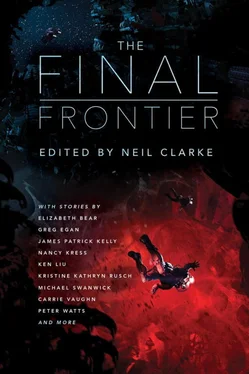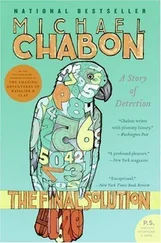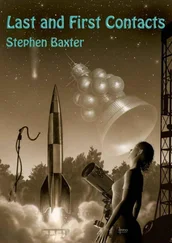Mitchell carefully set the helmet back in place. It protected whatever was left.
“What happened to you?” Mitchell breathed. Jaspar looked back and couldn’t say.
Everyone here commits suicide .
Whatever Jaspar had done hadn’t been successful. Mitchell turned and ran.
He coded open the next bulkhead door and left the ward. He could tell by the smell, which turned industrial instead of antiseptic. The corridor branched ahead, and Mitchell guessed which one would lead him to the center of the station, to the docking area. Other people he encountered struck him as strange-looking, as if he were traveling in a foreign country. He took calming breaths and tried not to look out of place. He knew the formulae that could take him from one end of the galaxy to the other. There ought to be formulae, equations, to do anything. He should find a way to turn invisible, so no one would see him. Visibility was all a matter of light and color. Space was color, the color of numbers. He could make himself transparent.
The corridor he followed now was straight, not curved, indicating he was walking along one of the spokes, toward the center of the cylindrical station. The gravity should be lessening. Mitchell stretched, lengthening his stride, to see if he could fly yet.
He keyed himself through two more bulkhead doors. Other corridors branched off to different levels, other departments, other wards. Mitchell’s heart lurched at the sight of blue Mil Div uniforms. He almost stopped to study the faces of those who wore them to see if Captain Scott was among them, if he recognized any of his crewmates. But that was unlikely. Surely the Drake had left the station by now.
Mitchell’s steps developed spring, but he wasn’t yet weightless. Ahead, the corridor opened into a wider thoroughfare, large enough for mechanized carts to travel. Equipment lockers lined the walls, vacuum suit closets in place between airlock doors. He could just go through the airlock and fly away. He could follow Morgan into an airless world.
He turned right and looked for an observation area.
“Mitchell! Mitchell, stop!” Both Keesey and Dalton appeared at the intersection of the corridor.
Mitchell ran.
“Stop him! Somebody stop him!”
He hunched his shoulders and kept on, grimly staring ahead, anticipating obstacles. Station personnel stared after him, shocked, or looked back at Keesey and Dalton pounding after him. Ahead, the corridor bulged outward. In most station designs, this meant there was some kind of work area, often with view ports that would let him see the ships in the dockyards. He was almost there. He just needed a glimpse of a ship’s running lights in space.
Somebody tackled him. A man half a head taller wearing a Mil Div uniform enclosed him in a bear hug and slammed him against the far wall. Mitchell’s head rang with the impact. He couldn’t hope to escape. He tried anyway, bucking and thrashing against his captor.
“Mitchell, look at me! Look at me!” Sweaty hands pressed against his cheeks. He shook his head, trying to break free of their grasp. “Mitchell!” Keesey shouted, pleading.
You’re going to follow Morgan .
He begged, “Let me look! I just want to look! I’m not going to kill myself, I’m not going to do anything! I haven’t done anything! Let me go!”
Multiple grips pinned his arms to the wall now. Others had come to help, he didn’t know how many. The more he struggled, the harder they held him. When he felt his sleeve being pushed up, he knew it meant somebody wielded a sedative patch.
Mitchell screamed in defiance; his voice echoing in the steel corridor startled him. “Mitchell!” Keesey managed to make herself heard over his noise. He clamped his mouth shut.
In the sudden quiet, the scene paused for a moment. Dalton held the patch ready but hadn’t yet pressed it against his arm.
Softly, Mitchell said, “Let me look. Just let me look outside one more time. Please. Please trust me. Please.”
This was his last chance at life.
He saw his desperation clearly reflected back at him in Keesey’s gaze. He thought he knew: She wanted to cure all her patients, and she kept failing. In him she was failing again.
He whispered, “You’ve never tried giving us what we want. What can it hurt? I’m already dead. Let me look.”
Dalton released him first. Then Keesey said, “Let him go.”
It had taken two others besides the doctors to restrain him. They all stepped back, tense, even Keesey, like he was a wild animal and they couldn’t predict what he’d do next. He moved deliberately, brushing his sleeves back into place. He would give them no cause to capture him like an animal and drag him back to the cage. Keeping a shoulder to the wall, he moved toward the observation area. The others followed, forming a half-circle around him, penning him in.
At last he rounded the corner, entered the darkened observation area, and his knees almost buckled. He leaned against the wall, and his eyes stung with tears.
The windows looked out over the edge of the dockyards where Law Station opened into space. A trio of ships was in dock and there was a scattering of light from the hull of the station—traffic guides, lights shining out of other view ports. The rest of the view looked into the black and the points of light of distant stars.
The Universe opened before him. This was seeing home after a long, impossible journey.
He put his face close to the window and cupped his hands around his eyes to cut out reflections.
Ships, bulging lengths of steel, drifted in the open. The blisters of modular sections—decks, sensory apparatus, weaponry, docking space—made their silhouettes uneven, monstrous, confusing. The shapes distracted the eye, which looked for the streamlined profile of something that might swim through water but only found these accreted, inartistic objects. Yet they moved so gracefully. The eye could not judge their scale against the backdrop of shadow and gray steel. He was watching a scene impossibly distant. Yet the lights threatened to swallow him.
One of the ships was a Research Division cruiser, probably returned from a frontier mission for a refit. The other two were Mil Div. The far one—his heart fluttered, because it was a courier class, a sleek, minimalist ship built for speed, blockade running and dodging firing lines. The Francis Drake was a courier. They were the prettiest ships in the fleet. It might even be—hard to tell from here.
His brow furrowed, he pulled away from the window. “Is that the Drake in dock?”
“Yes,” Keesey said.
“She should be long gone by now.” He turned back to the window, rubbed his sleeve over it when his breath fogged it.
“Look again.”
He watched for a long time, as long as he needed. The ship was locked into longterm docking, not simply linked by umbilical and airlock tubes like the other ships. She’d been damaged, a hole blasted into her starboard side as if a great monster had taken a bite out of her. Lights moved around her like fluttering insects: repair drones, suited workers on maneuvering platforms. A search light happened to run over the name written in bold cursive: M.D.S. Franc— . The remaining letters were charred.
The ship looked a little like Jaspar’s skull.
His mind formed the question, what happened , but he did not speak the words. A neural pathway that had been ruptured rebuilt itself when offered the proper bridge.
He pressed his hand to the window.
He put his thumb on the duty roster scanner inside the hatchway to the bridge.
“Good morning, Captain.”
Captain Crea Scott spared a glance over her shoulder. “Lieutenant. We have an hour until we need to jump. That enough time?”
Читать дальше












